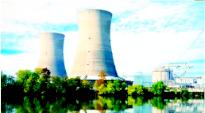Two US Nuclear Plants In Quake Zones
 The Wall Street Journal reports:
The Wall Street Journal reports:
Dozens of nuclear reactors operate in earthquake-prone regions around the world, including at least 14 in high-hazard areas, a Wall Street Journal analysis shows.
Most of those plants are in just two places: Japan and Taiwan, both islands with limited natural resources that have chosen the risks of nuclear calamity over complete dependence on foreign sources of energy.
Both are now being forced to re-evaluate that calculation amid Japan's unfolding nuclear crisis. A poll in Taiwan taken Monday—four days after a 9.0 magnitude earthquake off the coast of Japan triggered massive devastation and deadly tsunamis—showed that 55% of respondents lacked confidence in the island's nuclear facilities.
The Wall Street Journal looked at the location of more than 400 nuclear reactors across the world—as well as another 100 that are either planned or being built—using data provided by the World Nuclear Association, a London-based industry group. The Journal then used data from the Global Seismic Hazard Program, a 1999 study by the U.S. Geological Survey and the Swiss Seismological Service, to determine the earthquake risk at each plant.
According to the analysis, 48 of the world's operating nuclear reactors, or 11%, are in areas known to have at least moderate earthquake activity. These include the Fukushima Daiichi reactors at the center of Japan's nuclear crisis. Fourteen, or 3%, are in areas of high activity. Ten of those are located within a mile of a coastline, making them at risk for both earthquakes and tsunamis.
Japan and Taiwan together account for 10 of the 14 high-activity reactors. But the U.S. has two reactors in such areas and Slovenia and Armenia has one each. Armenia has another planned.
The nuclear industry says reactors world-wide are built to withstand the most powerful quakes thought possible at each location, plus usually an added safety factor in case those projections are wrong. The Fukushima Daiichi plant in Japan apparently survived last week's powerful earthquake intact, only to fall victim to the aftermath.
"There are large margins of safety factored into our plants," said Tom Kauffman, a spokesman for the Nuclear Energy Institute, a U.S. trade group.
Click here to read more.

